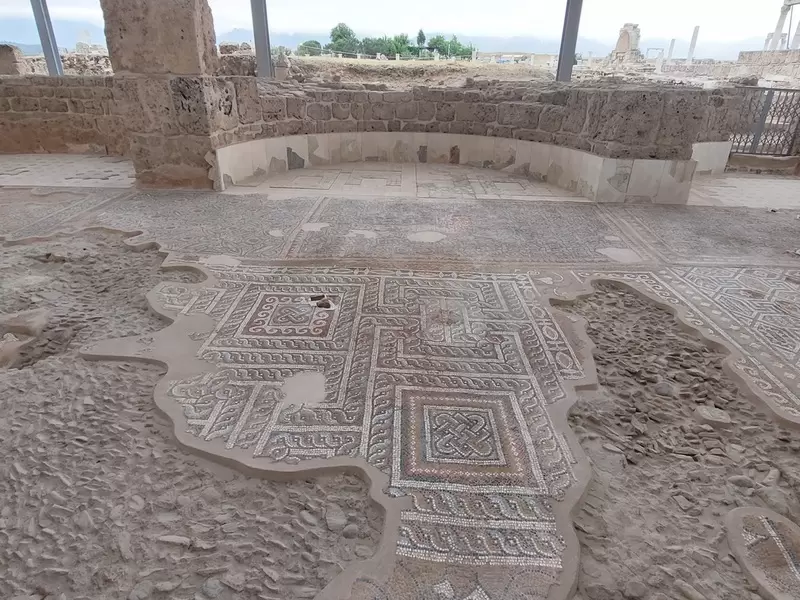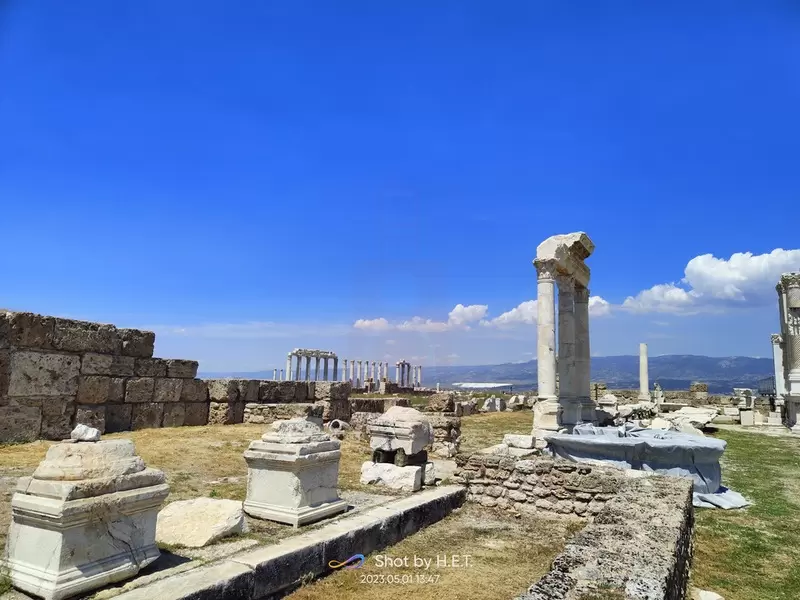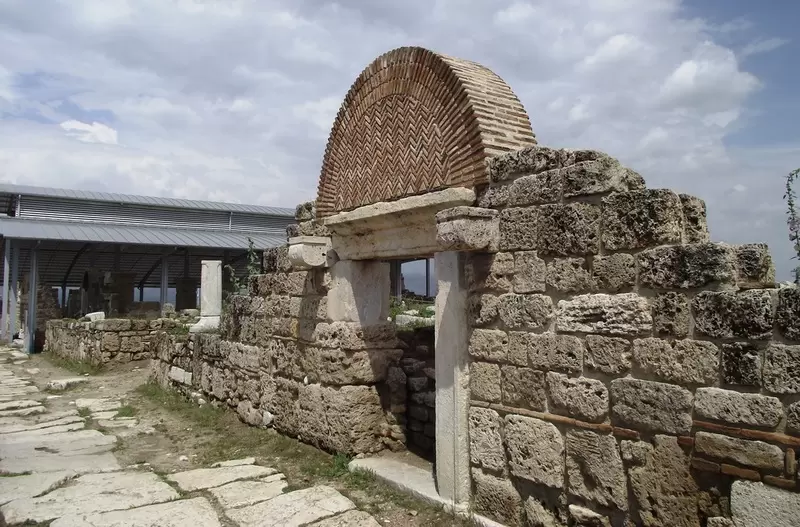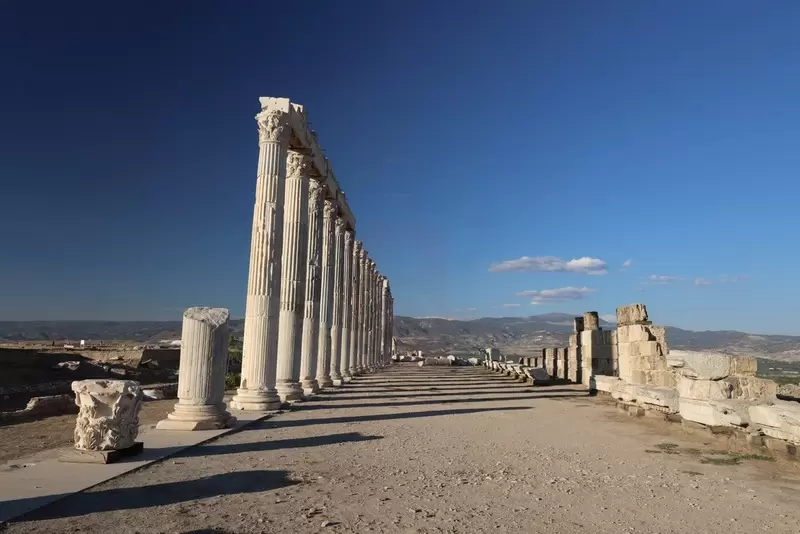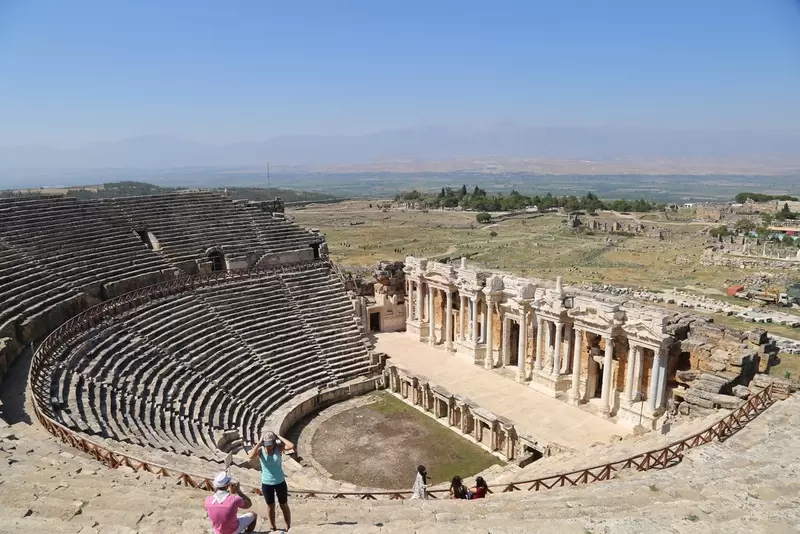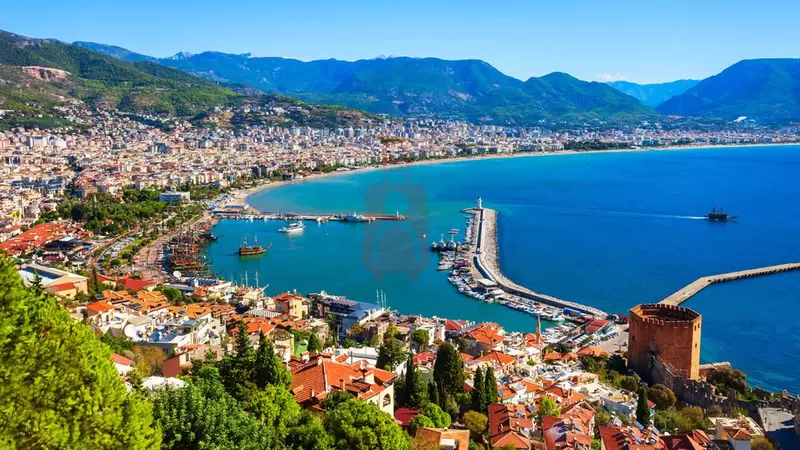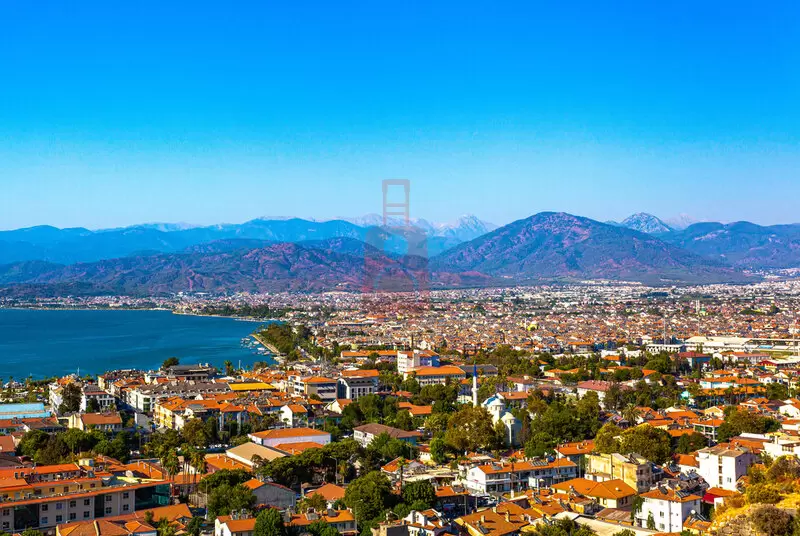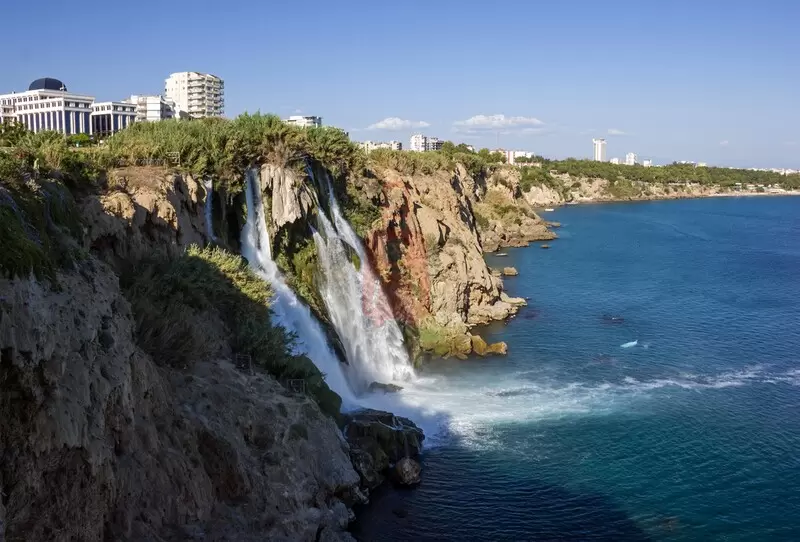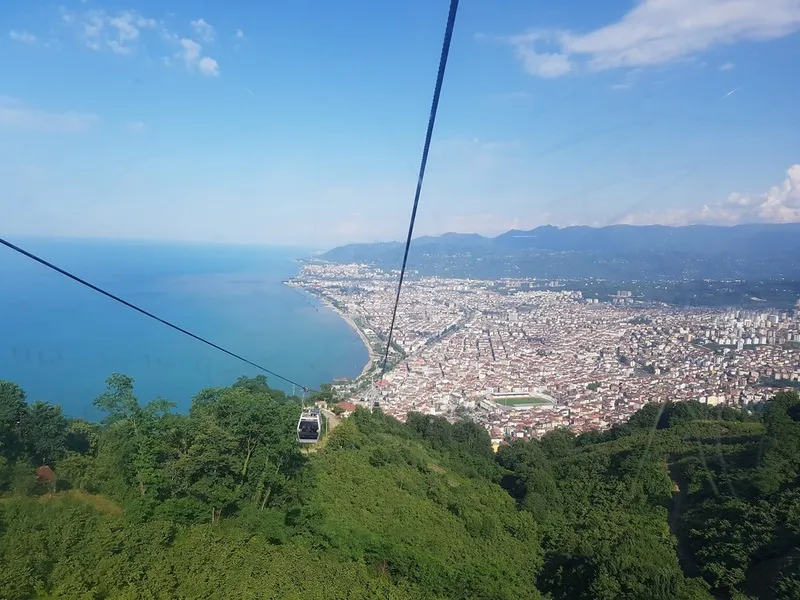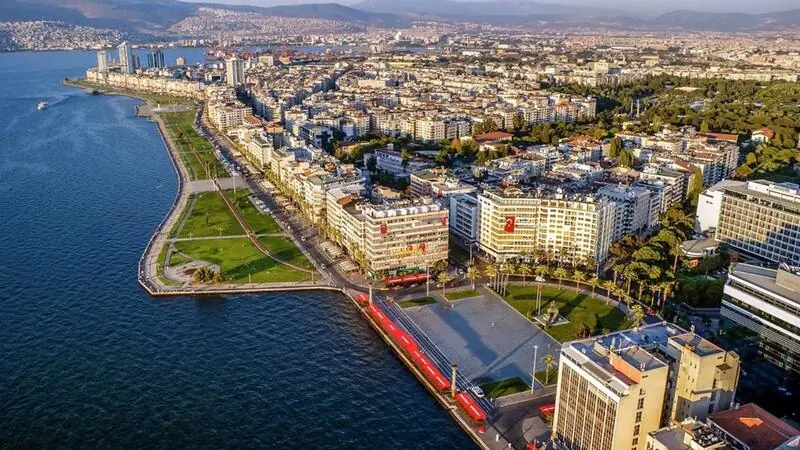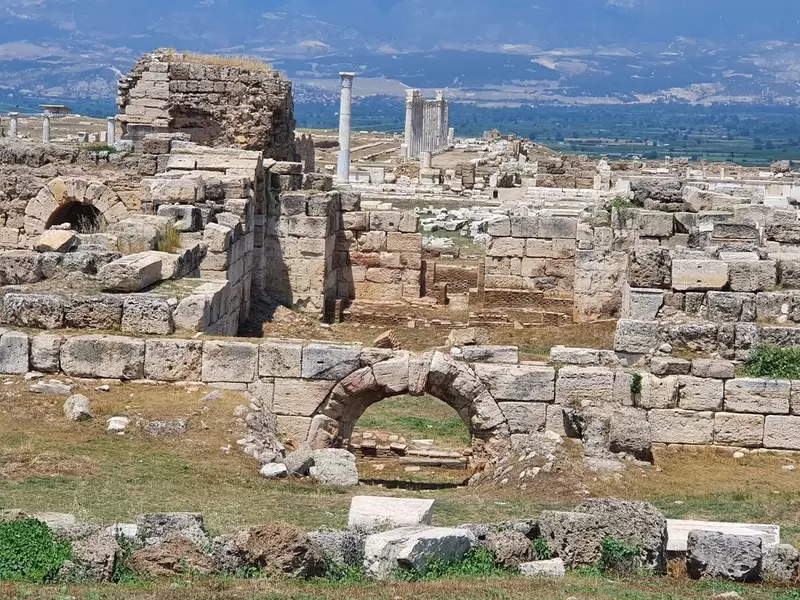
Welcome to Laodicea on the Lycus Ancient City! Situated in southwestern Turkey, Laodicea on the Lycus is an archaeological site of great historical and cultural significance. Laodicea on the Lycus is located in western Turkey, in the Denizli Province. It is situated near the modern town of Eskihisar, approximately 6 kilometers north of Denizli. Known for its rich history, architectural wonders, and strategic location, Laodicea offers a captivating experience for history enthusiasts and travelers seeking to explore the ancient world. To reach Laodicea on the Lycus, you can fly into Cardak Airport in Denizli, which serves domestic flights. From there, you can hire a car or take a taxi to reach the ancient city. The site is easily accessible by road, and there are signs directing visitors to the archaeological site.
Historical Background:
Laodicea on the Lycus was an ancient city founded in the 3rd century BCE. It was named in honor of Laodice, the wife of King Antiochus II, and it flourished as an important center of commerce, trade, and culture in the region. The city was strategically positioned at the crossroads of major trade routes, contributing to its prosperity and multicultural character.
Historical Significance:
Laodicea on the Lycus played a significant role in the ancient world,
and its ruins offer insights into its past prominence. Some of the
notable historical aspects of the city include:
-
Trade and Economy: Laodicea was strategically located on major trade routes and was known for its prosperous textile industry, especially its black wool. The city's wealth contributed to its development and attracted merchants and traders from various regions.
-
Cultural and Intellectual Hub: Laodicea was renowned for its vibrant cultural and intellectual life. It had a renowned medical school and was a center for philosophy and literature. The city was also known for its theatrical performances and sporting events.
-
Early Christian Community: Laodicea was mentioned in the New Testament of the Bible, specifically in the Book of Revelation. It was one of the seven churches addressed by the Apostle John in his letters. The city had a significant early Christian community.
Archaeological Highlights:
Exploring Laodicea on the Lycus allows visitors to discover several remarkable archaeological highlights that showcase its historical significance:
1. Theater: The theater of Laodicea is one of the city's most impressive structures. Built during the Roman period, it could accommodate thousands of spectators and hosted various performances and events. The theater's well-preserved seats, stage, and architectural elements provide a glimpse into the grandeur of ancient entertainment.
2. Stadium: Laodicea boasts a remarkably well-preserved stadium, which was an essential part of the city's social and sporting life. The stadium could accommodate around 20,000 spectators and was used for athletic competitions and other public gatherings.
3. Odeon: The Odeon, or concert hall, was a smaller but equally notable structure in Laodicea. It served as a venue for musical performances, lectures, and other cultural events. Today, its ruins offer insights into the city's artistic and intellectual life.
4. Ancient Streets and Water Systems: The ancient city's well-preserved streets, colonnades, and intricate water supply systems are testament to the advanced urban planning and engineering of the time. These features provide valuable insights into the daily life and infrastructure of the city.
Visiting Laodicea on the Lycus Ancient City:
Visiting Laodicea on the Lycus offers an opportunity to explore the
archaeological remains of an ancient city and delve into its rich
history.
When you visit Laodicea, you can explore the ruins and remnants of various structures, including the theater, the stadium, the agora (marketplace), and the ancient water system. The well-preserved columns, arches, and other architectural elements provide glimpses into the city's grandeur.
It's advisable to wear comfortable shoes suitable for walking on uneven terrain, as the site may have gravel or rocky paths. Don't forget to bring sun protection, as the site may be exposed to sunlight.
While in the Denizli Province, you can also visit other nearby attractions, such as the ancient city of Hierapolis, known for its hot springs and the famous Pamukkale terraces. Denizli itself offers modern amenities, hotels, and restaurants for visitors.
Visiting Laodicea on the Lycus Ancient City allows you to immerse yourself in the historical and cultural heritage of this once-thriving city. You can appreciate the architectural achievements and gain insights into its significance in the ancient world.
Visiting Tips:
- Laodicea on the Lycus is located near the modern city of Denizli in Turkey. Consider hiring a local guide or joining a guided tour to enhance your understanding of the site's historical and cultural significance.
- Wear comfortable footwear suitable for walking on uneven terrain, as the ancient city may have pathways and stairs that require some physical effort.
- Don't forget to bring sun protection, water, and snacks, as amenities may be limited in the vicinity.
Nearby Attractions:
While visiting Laodicea, you can also explore other attractions in the region:
- Hierapolis: Located nearby, Hierapolis is an ancient city famous for its well-preserved Roman theater, necropolis, and the stunning natural formations of Pamukkale, known as the Cotton Castle.
- Denizli: The modern city of Denizli offers a range of amenities and attractions, including traditional Turkish markets, local cuisine, and the Denizli Archaeological Museum.
In conclusion, a visit to Laodicea on the Lycus Ancient City offers a unique opportunity to step back in time and explore the remnants of a once-thriving civilization. Immerse yourself in the historical and cultural significance of this ancient city, marvel at its architectural wonders, and gain a deeper understanding of the past.
Please note that archaeological sites are subject to ongoing research, restoration, and accessibility may vary. It's advisable to check for the latest information and guidelines from official sources before planning your visit to Laodicea on the Lycus Ancient City.
